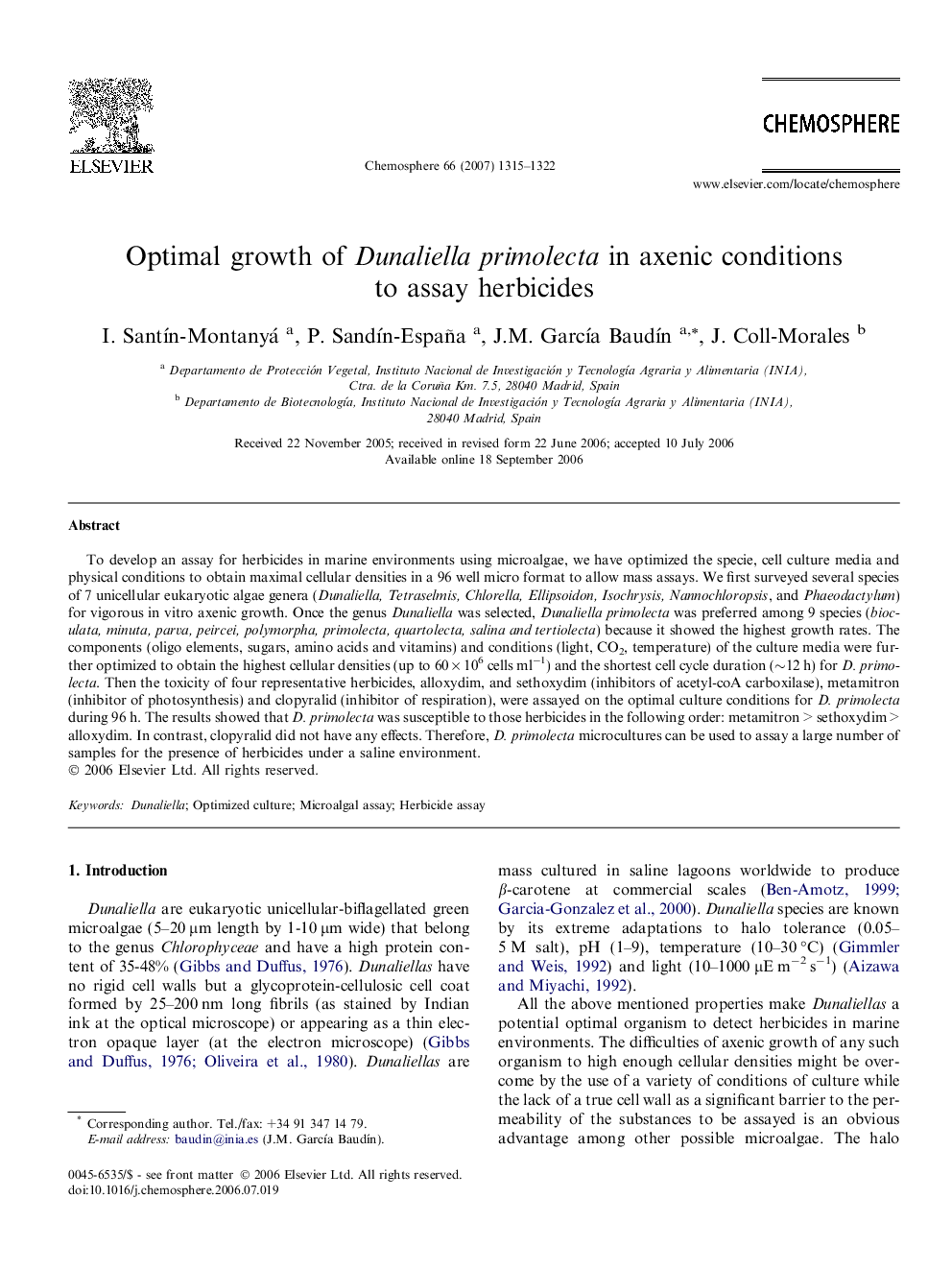| کد مقاله | کد نشریه | سال انتشار | مقاله انگلیسی | نسخه تمام متن |
|---|---|---|---|---|
| 4415305 | 1307742 | 2007 | 8 صفحه PDF | دانلود رایگان |

To develop an assay for herbicides in marine environments using microalgae, we have optimized the specie, cell culture media and physical conditions to obtain maximal cellular densities in a 96 well micro format to allow mass assays. We first surveyed several species of 7 unicellular eukaryotic algae genera (Dunaliella, Tetraselmis, Chlorella, Ellipsoidon, Isochrysis, Nannochloropsis, and Phaeodactylum) for vigorous in vitro axenic growth. Once the genus Dunaliella was selected, Dunaliella primolecta was preferred among 9 species (bioculata, minuta, parva, peircei, polymorpha, primolecta, quartolecta, salina and tertiolecta) because it showed the highest growth rates. The components (oligo elements, sugars, amino acids and vitamins) and conditions (light, CO2, temperature) of the culture media were further optimized to obtain the highest cellular densities (up to 60 × 106 cells ml−1) and the shortest cell cycle duration (∼12 h) for D. primolecta. Then the toxicity of four representative herbicides, alloxydim, and sethoxydim (inhibitors of acetyl-coA carboxilase), metamitron (inhibitor of photosynthesis) and clopyralid (inhibitor of respiration), were assayed on the optimal culture conditions for D. primolecta during 96 h. The results showed that D. primolecta was susceptible to those herbicides in the following order: metamitron > sethoxydim > alloxydim. In contrast, clopyralid did not have any effects. Therefore, D. primolecta microcultures can be used to assay a large number of samples for the presence of herbicides under a saline environment.
Journal: Chemosphere - Volume 66, Issue 7, January 2007, Pages 1315–1322